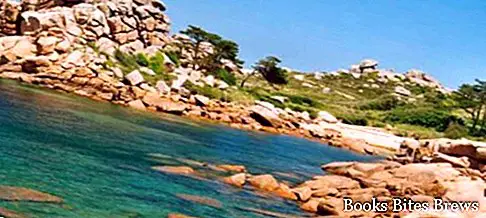What to see in Brittany, a region of north-western France that occupies the peninsula of the same name, stretched between the English Channel and the Atlantic Ocean, west of the Regions of Lower Normandy and the countries of the Loire, with the capital Rennes.
Tourist information
The territory, included in the Armorican Massif, has a slightly undulating landscape, softened and eroded by time.
The various and highly articulated coasts develop forming deep inlets and large protected bays.
Brittany is a land of ancient traditions, and has been inhabited since prehistoric times, as evidenced by the precious archaeological remains that are found in the area.
The fascinating landscape dominated by the sea and the long coastal stretch characterize this region which takes its name from the Bretons, who came from Britain in the 5th century. B.C..
This Celtic population has preserved its own identity, and boasts a rich linguistic and cultural heritage, which makes this region unique, different from the rest of France.
What see
Rennes is located at the confluence of the Ille and Vilaine rivers, at the center of natural communication routes.
The new city, which is located lower than the old city, was founded by the Celts and then conquered by the Romans, rebuilt after 1720 following a fire that destroyed it almost totally.
The churches of Saint-Germain, Notre-Dame and Mordelaise gate survived the fire.
Among the most significant monuments of Rennes we point out the Palais du Parlement de Bretagne, of classical architecture, which was the seat of the Parliament of Brittany until 1790.
In the Palazzo dei Musei you can admire beautiful collections of Breton art and other works.
Recommended readings- Champagne Ardenne (France): what to see in the region
- Saint Tropez (France): what to see
- Burgundy (France): what to see in the region
- Lourdes (France): what to see where the Madonna appeared
- Picardy (France): what to see in the region
Saint Malo is a beautiful city located on the English Channel coast, at the innermost point of the homonymous gulf.
In the past it was one of the most important ports in the Kingdom and has experienced periods of great prosperity, thanks to the control of maritime traffic carried out by corsairs who operated on behalf of the king, between the fifteenth and sixteenth centuries.
The fortified walls, which surround the historic center, overlook the beaches exposed to low and high tides.
Inside the old city is the Saint-Vincent Cathedral, famous for its stained glass windows, while to reach the fortress on the Ile du Grand Bé, where the seventeenth-century writer François-René de Chateaubriand is buried, wait for the low tide.
Dinan, which is located about 20 km from Saint-Malo, is a characteristic medieval town where ancient houses overlook narrow, cobbled streets, sheltered by the mighty Castello de Dinan.
Carnac is a location that houses one of the oldest megalithic sites in Europe.
Megaliths, called menhirs, are vertical monoliths dating back to the Neolithic period.
Arranged in a circle or aligned, their meaning is still uncertain.
In the area there are also numerous megalithic tombs, called Dolmen.
Josselin is a town with a pretty old town, where the castle of the same name is located, one of the most beautiful in the region, built on the Oust river in the early 11th century and rebuilt several times.
In the suggestive Gulf of Morbihan there is the city of Vannes, with its artistic and picturesque old town surrounded by thirteenth-century walls, where the beautiful Gothic Cathedral dedicated to Saint Pierre stands out.




